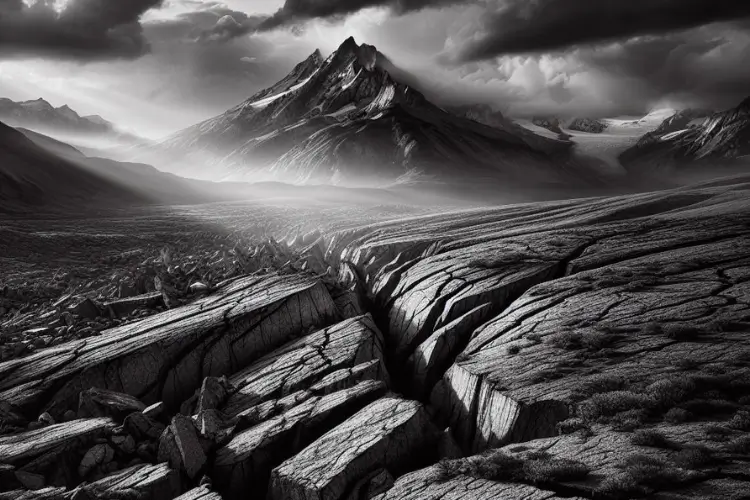Stress buildup due to the long-term deformation of the earth’s faults.
The faults release this stress by sudden movements of deep parts of the rocks.
This release of the stored energy produces seismic waves.
These waves move inside the earth.
These waves shake the ground when they reach the surface.
The shake on the surface is known as an earthquake.
We will give you details of many aspects of the earthquakes.
Which of the Following Describes the Type of Deformation Experienced by Rocks before an Earthquake?
A. Fast Deformation
B. Slow Deformation
C. Intermediate Deformation
D. No Deformation
The type of deformation experienced by rocks before an earthquake is known as slow deformation.
The slow deformation is due to the resistance between the fault lines that prevent the fault lines from slipping.
This resistance also produces elastic strain energy.
The faults release the elastic energy when the resistive force cannot hold the fault surface.
It leads to an abrupt release of energy. This energy causes waves that produce earthquakes.
What Causes Earthquakes?
The sudden release of elastic strain energy in the earth’s faults causes earthquakes.
You can learn about the earth’s faults to understand the earthquakes.
Faults are the large cracks on the earth’s surface.
There are two parts to a fault.
The part that moves upward is known as the footwall.
One part moves towards the lower side.
People call it the handing wall.
These cracks can be small or massive.
The most significant faults are known as the tectonic plates.
Faults are continually moving slowly.
Some move without any elastic tension as there is low resistance between the faults.
Some undergo slow deformation due to the resistance between the faults.
There are now earthquakes if there is no buildup of the elastic force due to the slow deformation.
What Type of Deformation Does Results in an Earthquake?
Slow deformation results in an earthquake as faults move slowly without friction.
Sometimes, rocks face high resistance between the surfaces. It stops the movement.
The energy behind the movement does not stop as it accumulates in the form of elastic energy.
Many types of faults can accumulate this energy.
When there is a movement between the rock in the horizontal plane, it is known as the strike-slip fault.
Dip-slip is a more common type of fault as rocks move perpendicular to each other in this type.
Rocks do not always move in perpendicular or horizontal positions.
Some can move at a specific angle.
When there is a movement at an angle, we call it oblique-slip.
It is one of the best ways to categorize the faults because this classification helps us identify the source of the earthquakes.
What Are Elastic Deformation Earthquakes?
Elastic deformation earthquakes are the sudden ground movement due to the sudden release of the elastic energy stored in the faults.
You can learn about different types of deformations in the rock to understand the concept of elastic deformation.
The first type of deformation is ductile deformation.
When the rock’s surface cause friction and the rock changes structure instead of storing energy, it is ductile deformation.
All the deformation energy goes to changing the rock structure.
Rock can also fracture due to resistance.
Fracture is also a type of deformation that does not involve energy storage.
Deformation only stores energy when there is some elasticity in the rock.
The rock will act as a rubber to store the energy of the movement.
It will release energy suddenly when the energy passes the resistance threshold.
These earthquakes are known as deformation earthquakes.
What Are the Two Primary Types of Waves Generated by Earthquakes?
Surface and body waves are the two primary types of waves generated by earthquakes.
When the faults release energy suddenly, the energy travels in the form of waves.
If the waves go inside the earth, it is known as body waves.
Scientists record these waves to identify the earth’s composition as these waves give information about the hidden parts of the earth’s core.
The energy also comes to the surface and moves like a wave.
Surface waves move the same way as waves on the water surface.
It will shake the earth as it moves along the earth’s surface.

